In addition to the above factors, another advantage that makes Nguom Ngao Cave an attractive tourist destination is that the cave is located on the same route to Ban Gioc waterfall (both in Dam Thuy commune, Trung Khanh district, Cao Bang province).
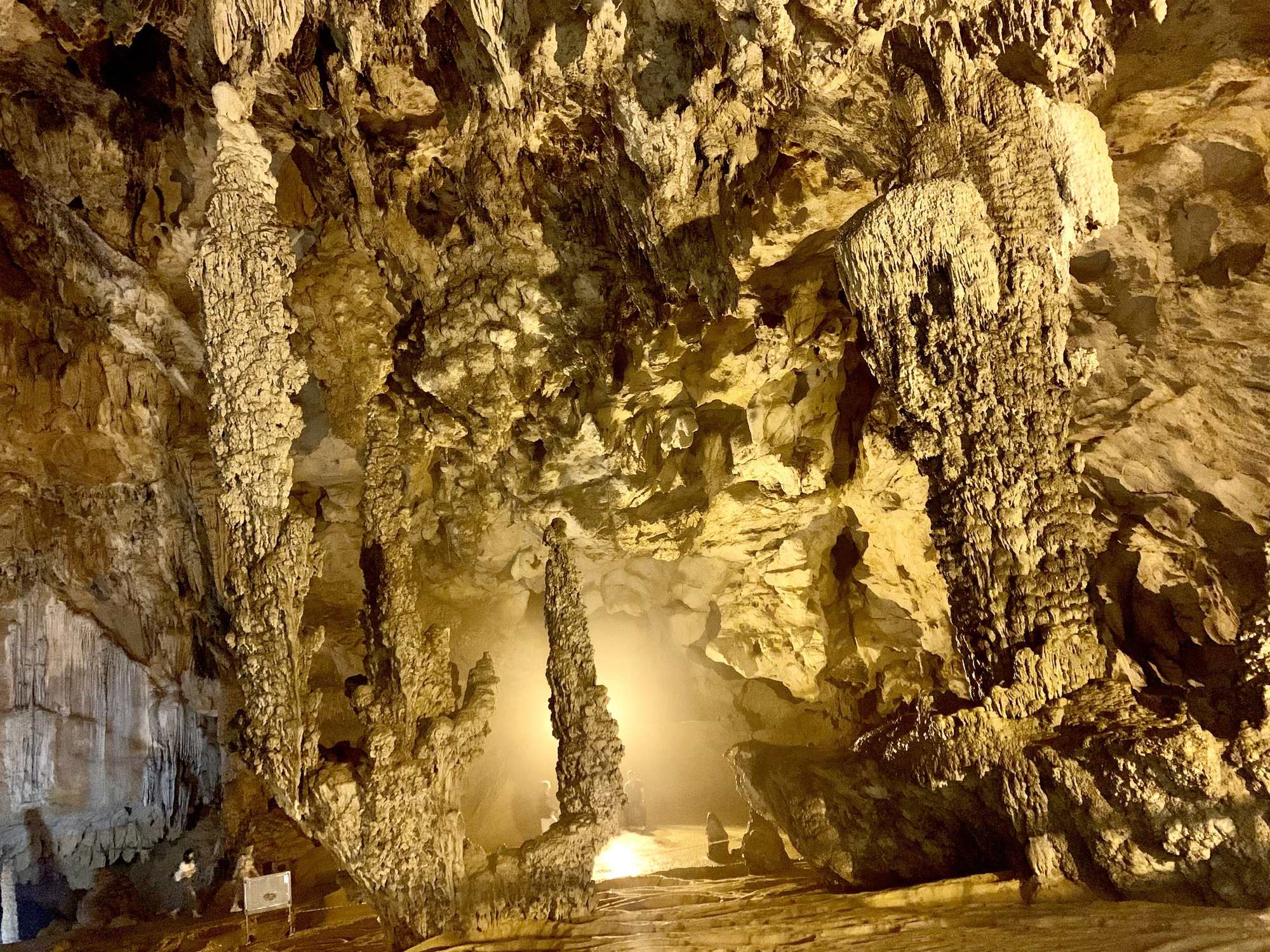
The vast space inside Nguom Ngao cave with stalactites shaped like coral trees tens of meters high
Starting from Cao Bang City (Cao Bang Province), tourists travel about 90 km, pass Ma Phuc Pass, Khau Lien Pass, follow Provincial Road 206 to see the sign to Nguom Ngao Cave. Usually, many tourist groups will choose Nguom Ngao Cave as the first place to visit, then go to explore Ban Gioc Waterfall.
According to the tour guide, Nguom Ngao cave is a local name in the Tay language and there are two different explanations.
Nguom Ngao in Tay language means tiger cave. According to legend, this cave was once home to ferocious tigers. The second explanation is that inside the cave, water flows and hits the stone arches, creating a sound like a tiger's roar, so Nguom Ngao cave is also called the tiger's roar cave.
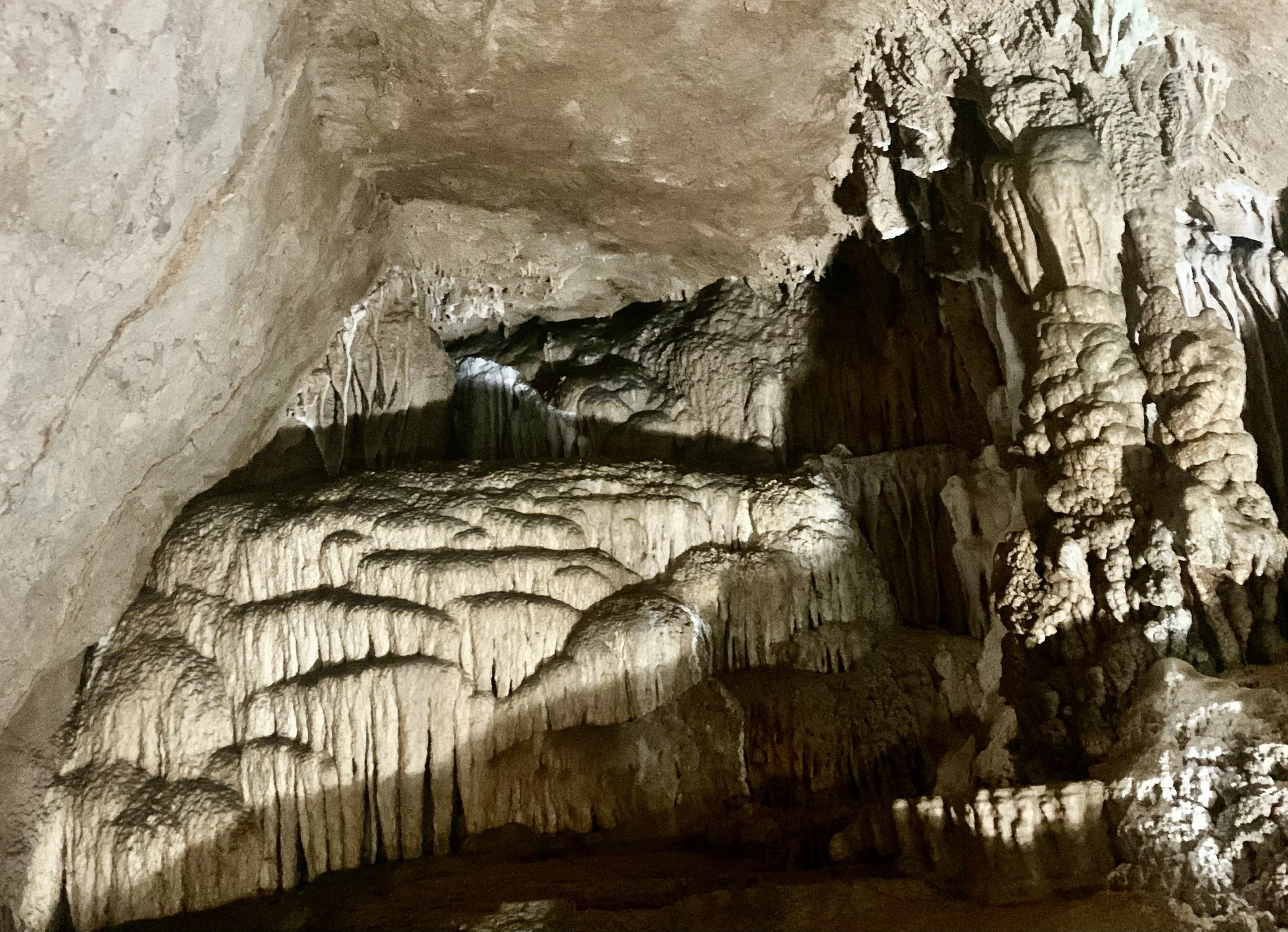
Stalactites shaped like part of Ban Gioc waterfall inside Nguom Ngao cave
According to published scientific documents, Nguom Ngao Cave was discovered in 1921, is a limestone cave formed about 400 million years ago, with a total length of about 3 km.
In 1996, Nguom Ngao Cave was put into tourism exploitation by Cao Bang province. In 1998, Nguom Ngao Cave was recognized as a national scenic spot. From 1996 to 2021, tourists mainly visited the nearly 1 km long path inside the cave, with a total walking time of about 40 - 50 minutes.
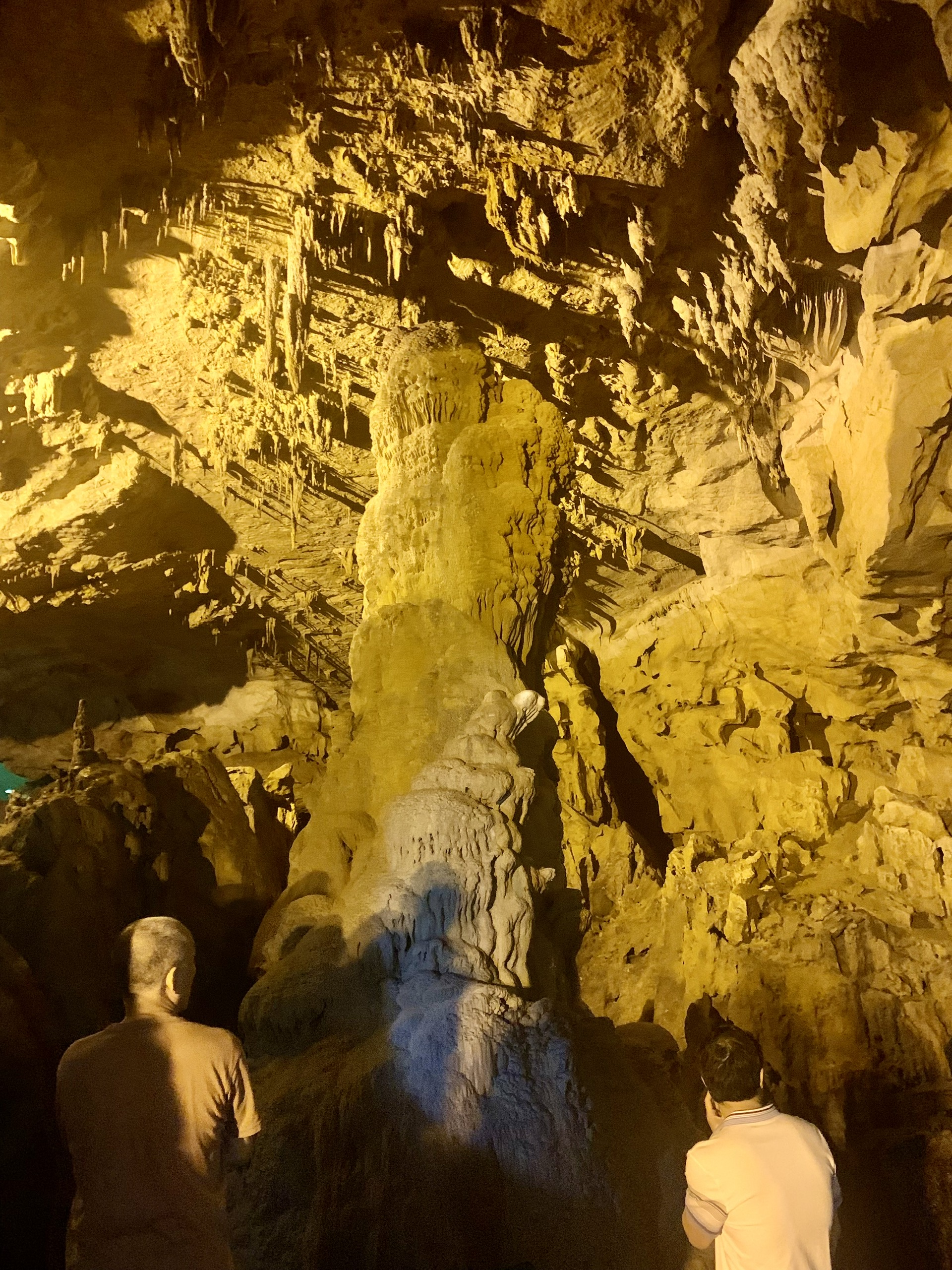
Nguom Ngao Cave has many large stalactites. Water still seeps into the cave roof and many young stalactites continue to form.
On the occasion of the 100th anniversary of the discovery of Nguom Ngao Cave, in December 2021, Cao Bang province continued to announce a new tourist route in this cave, the Ban Thuon branch tourist route, with investment in a lighting system, walking bridges, and boating in the cave...
Through the survey and announcement of Cao Bang province, this new tour route is assessed to have more beautiful and majestic scenery than the old route, and will bring more attractive experiences for tourists when visiting and exploring one of the most beautiful caves in Vietnam.
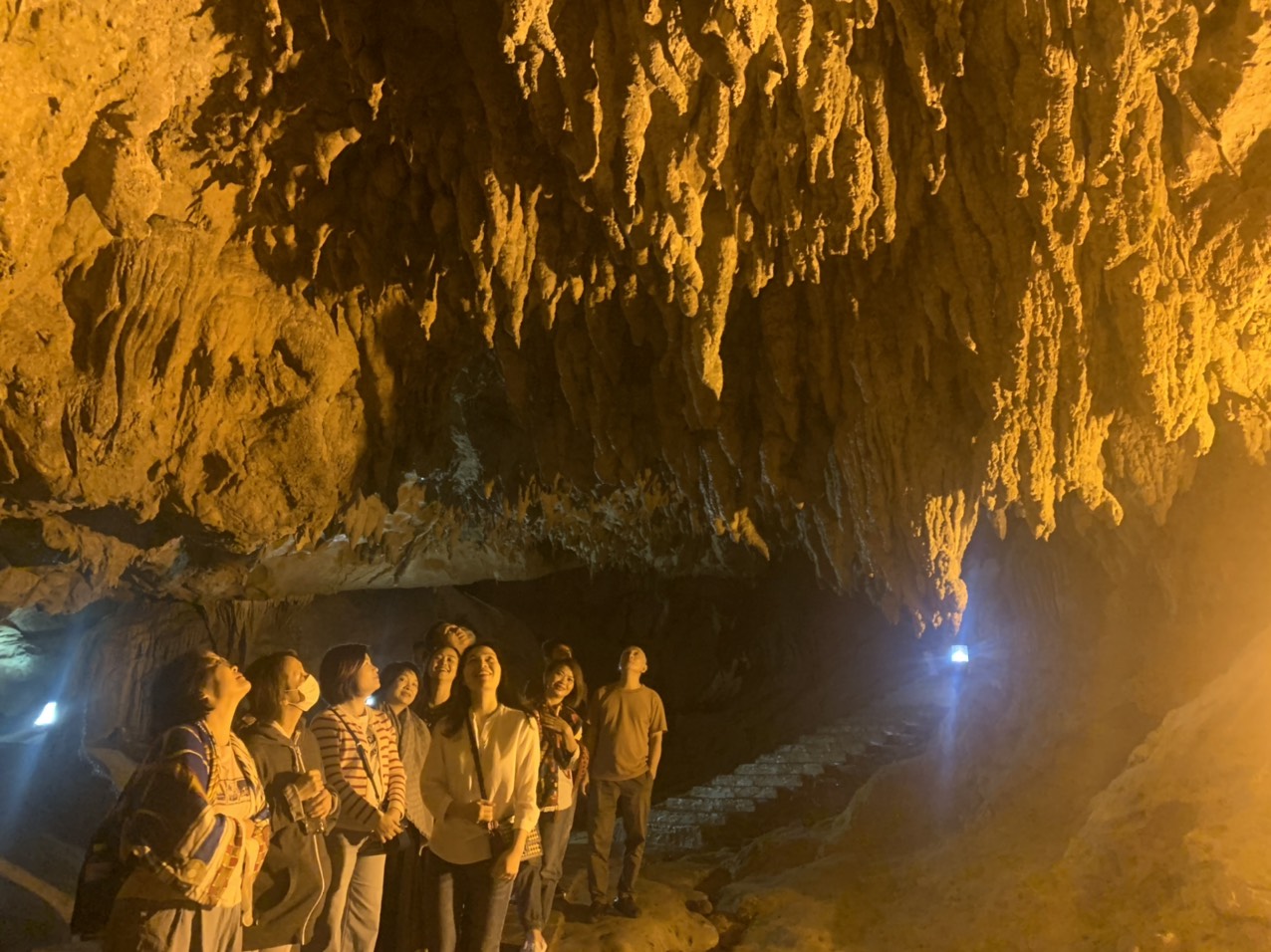
On the first stretch of road into the cave, many visitors are amazed by the beauty of the stalactites that look very much like ginseng roots.
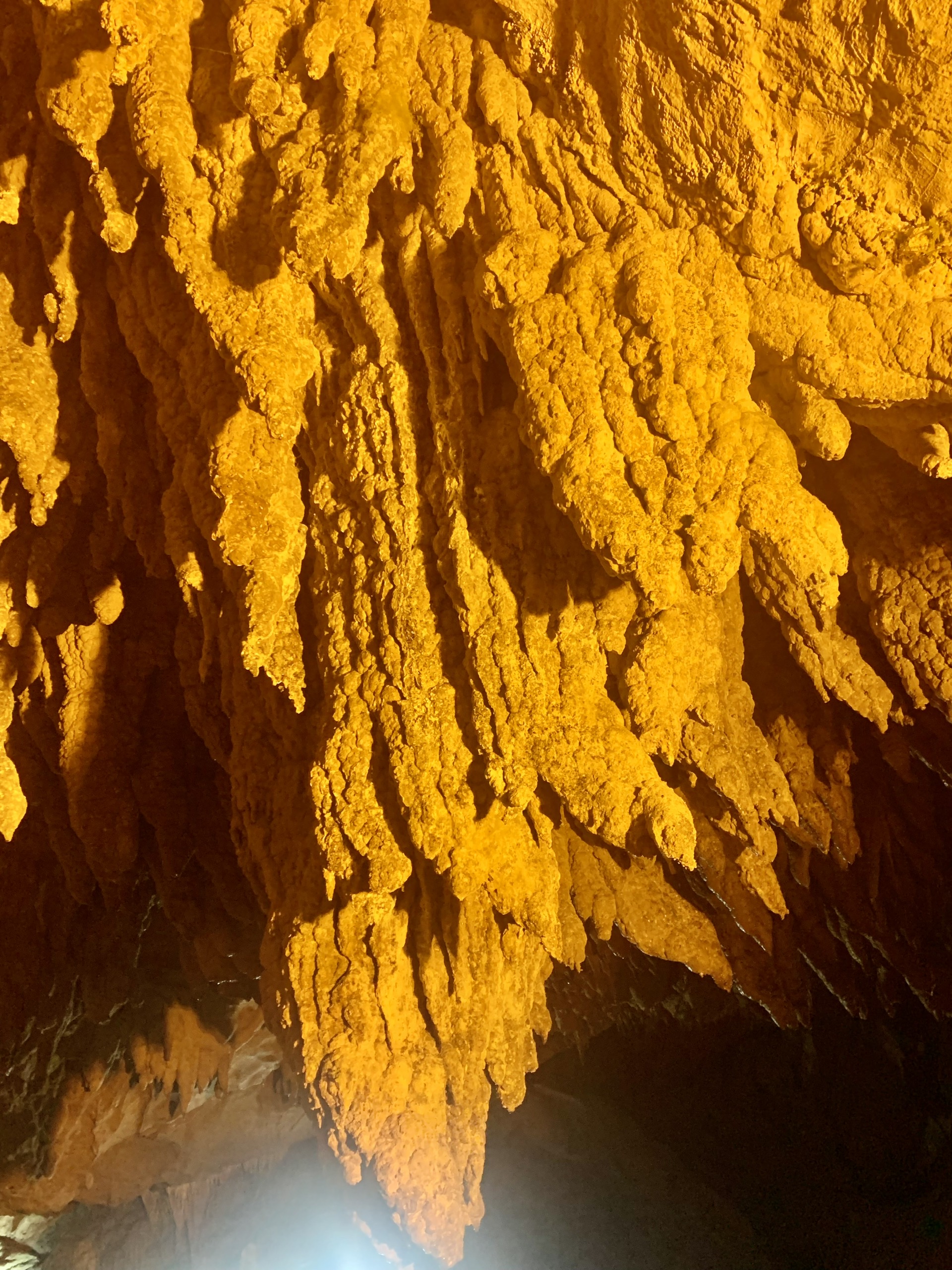
Close-up of a ginseng-shaped stalactite inside Nguom Ngao Cave
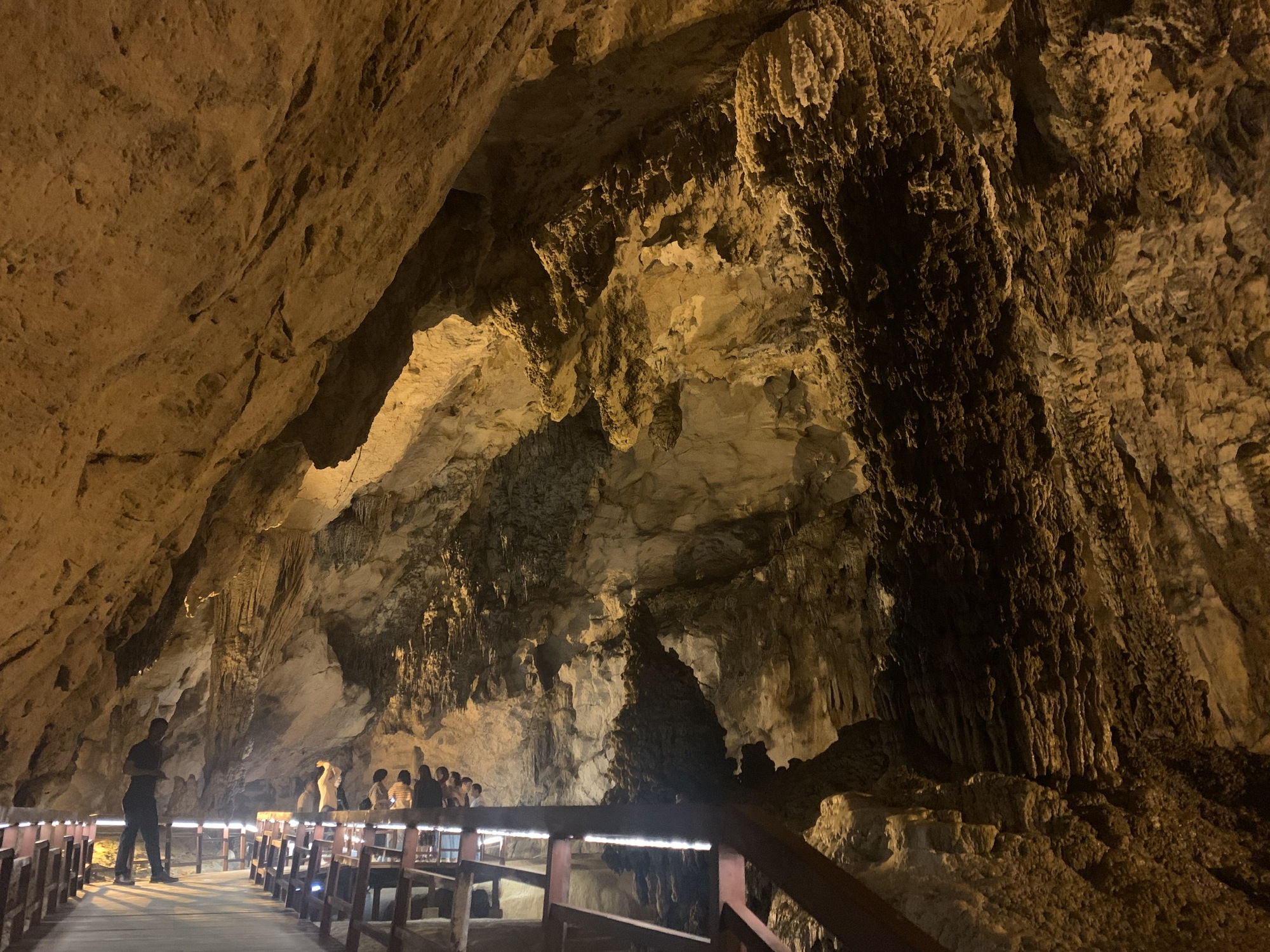
Inside Nguom Ngao cave, there are many large spaces, visitors can freely admire the beauty of stalactites.
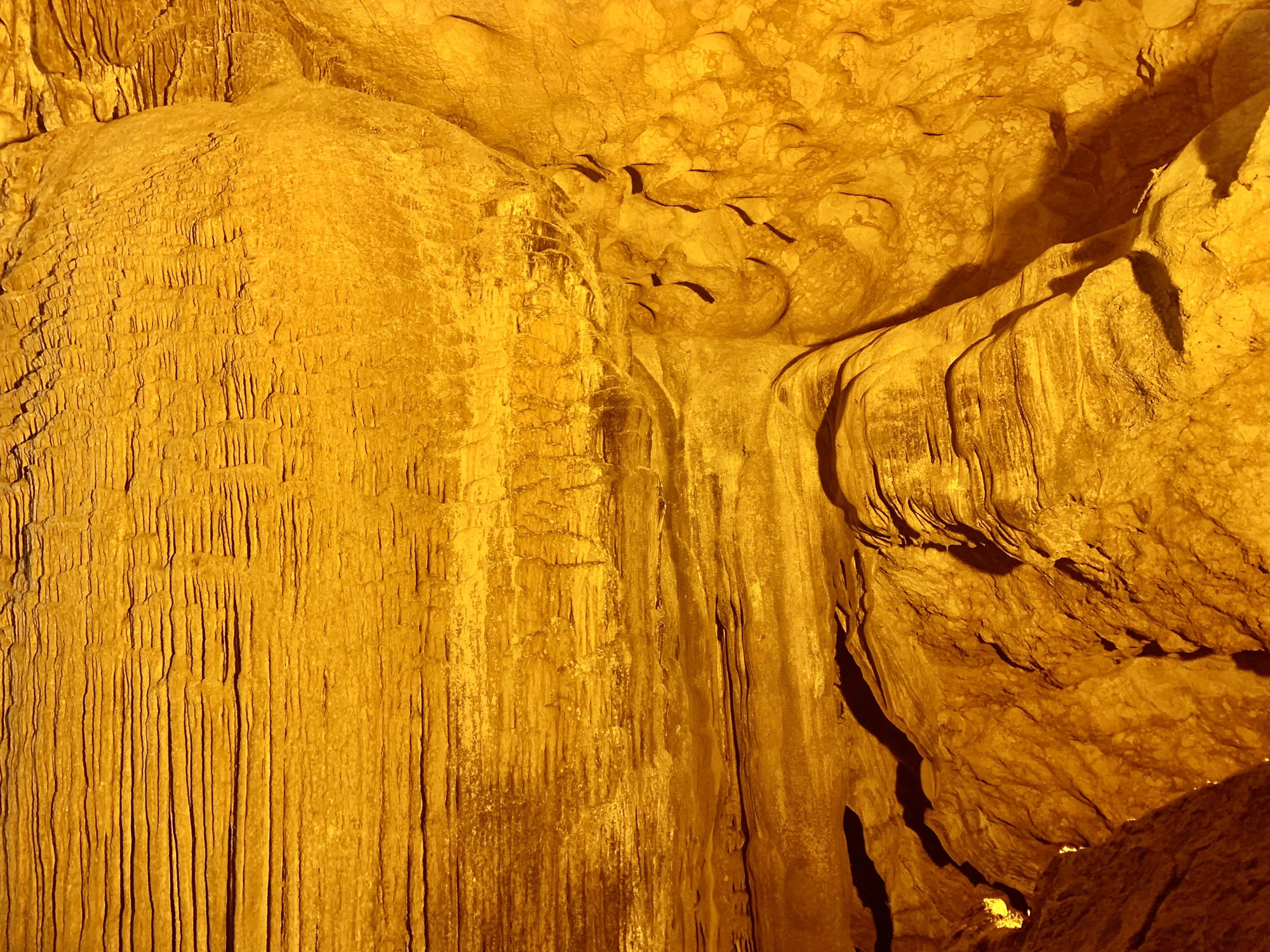
Stalactites with beautiful waterfall shape inside Nguom Ngao cave
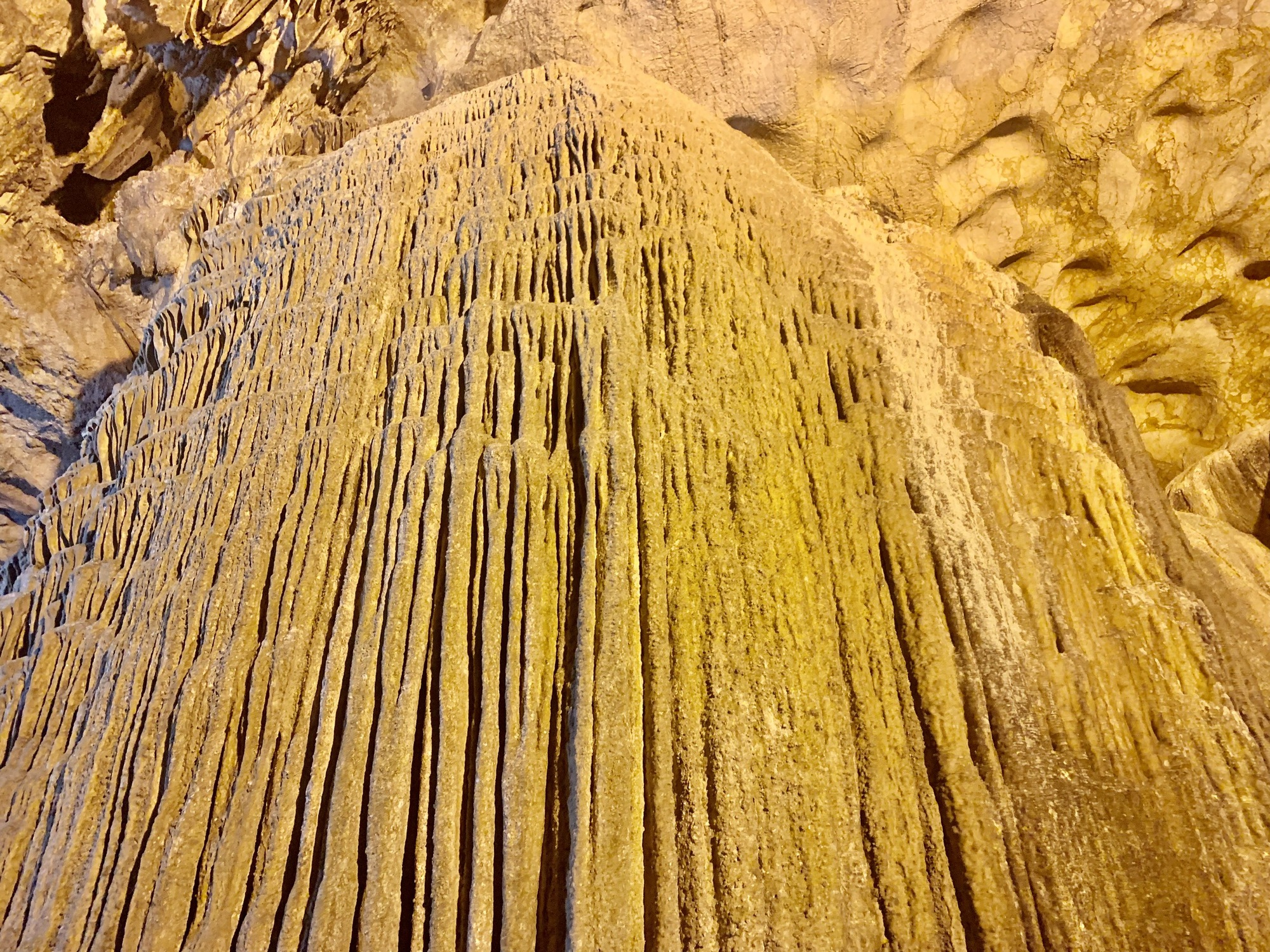
Water flowing from the cave roof over hundreds of millions of years has created majestic golden sand-colored stalactites.
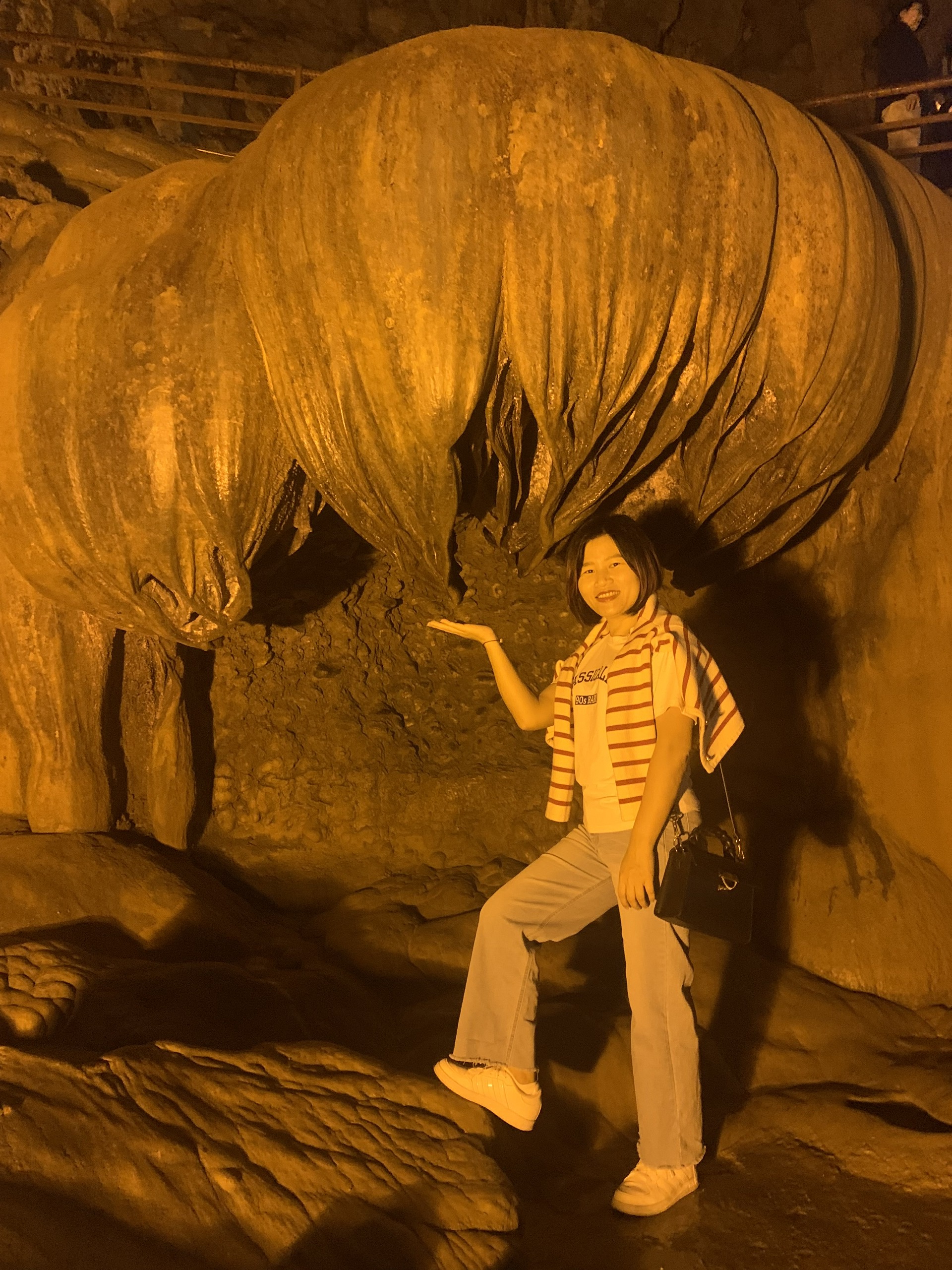
Stalactites resembling upside-down lotus flowers, one of the impressive sights inside Nguom Ngao Cave
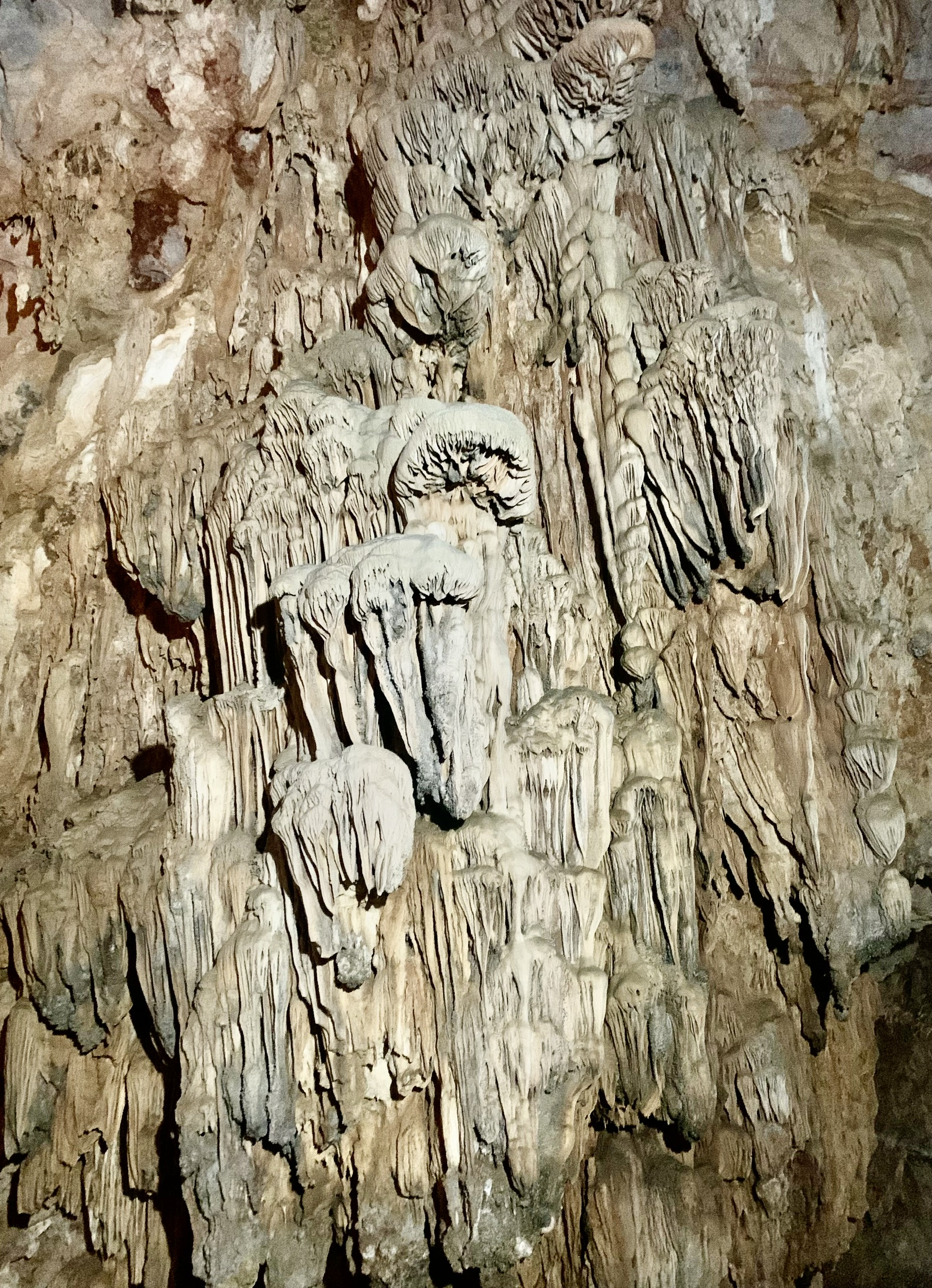
The stalactite resembles a school of swimming jellyfish.
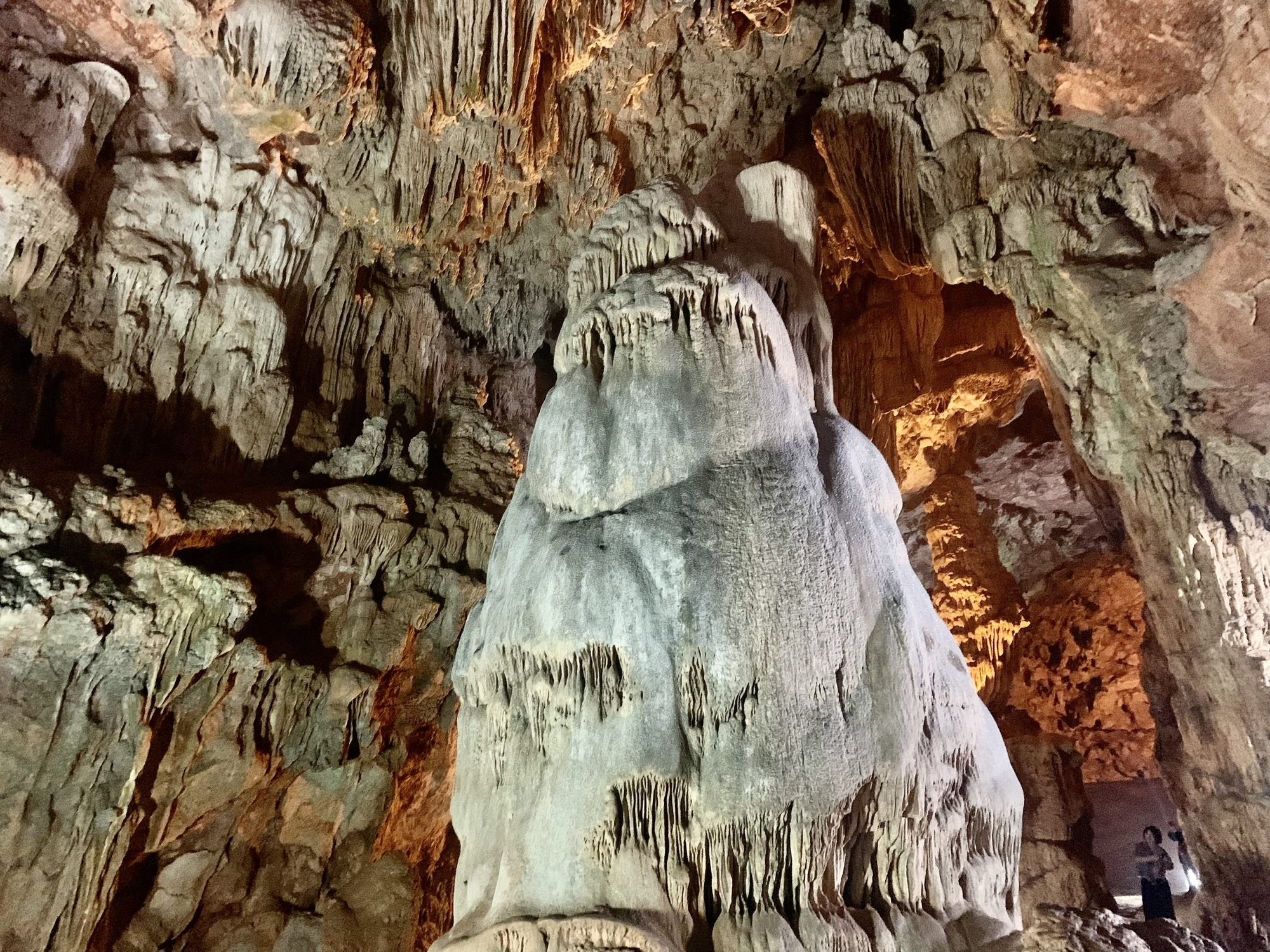
Due to the different calcium content in the water, the stalactites in Nguom Ngao Cave have many different natural colors, some are yellow sand color, some are gray. In the photo is the area where the stalactites are gray like silver blocks.
Source link


![[Photo] Speeding up construction of Ring Road 3 and Bien Hoa-Vung Tau Expressway](https://vstatic.vietnam.vn/vietnam/resource/IMAGE/2025/3/31/f1431fbe7d604caba041f84a718ccef7)
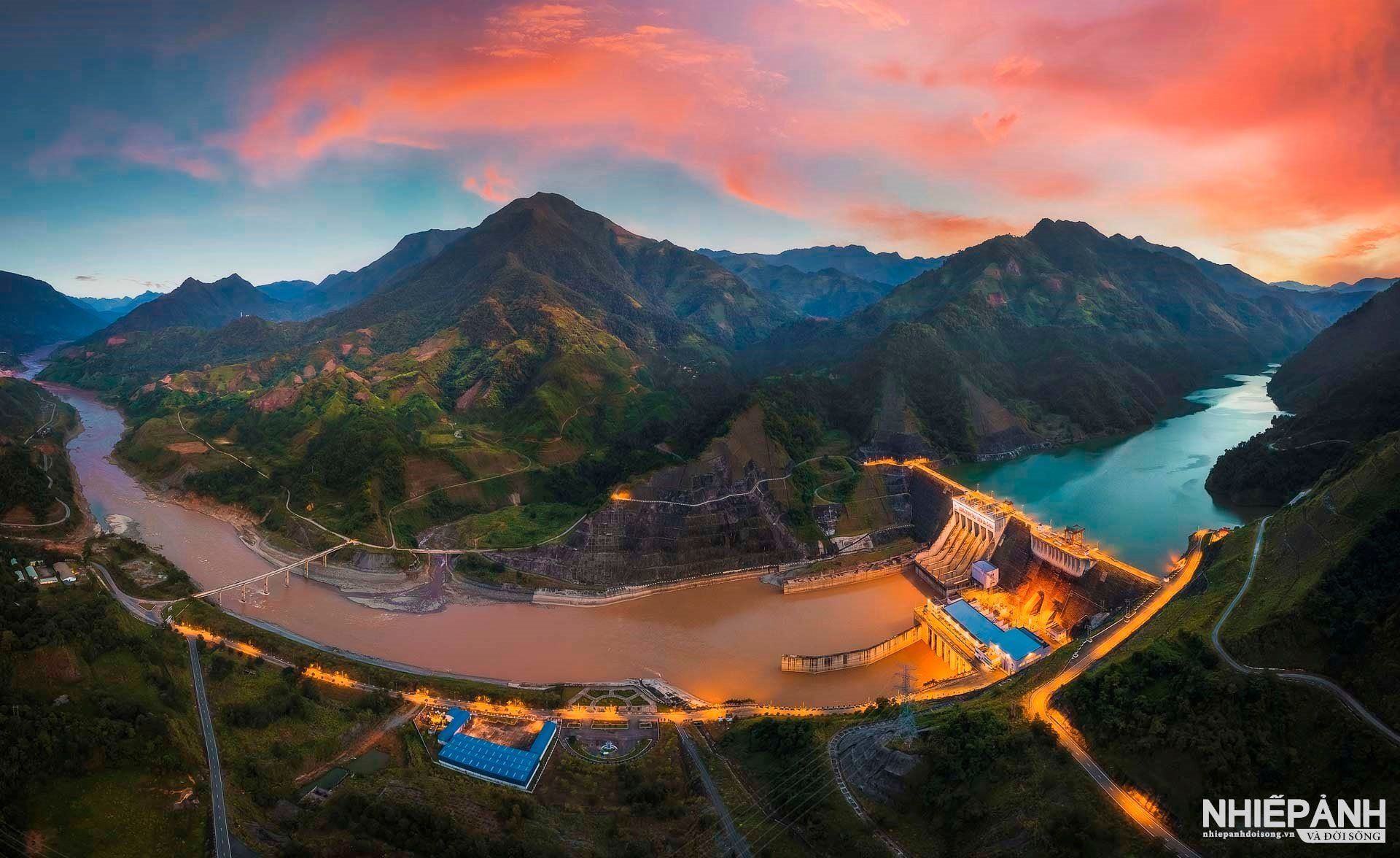
![[Photo] 2nd Conference of the Party Executive Committee of Central Party Agencies](https://vstatic.vietnam.vn/vietnam/resource/IMAGE/2025/3/31/8f85b88962b34701ac511682b09b1e0d)
![[Photo] Prime Minister Pham Minh Chinh receives delegation of leaders of US universities](https://vstatic.vietnam.vn/vietnam/resource/IMAGE/2025/3/31/8be7f6be90624512b385fd1690124eaa)

![[Photo] General Secretary To Lam receives US Ambassador to Vietnam Marc E. Knapper](https://vstatic.vietnam.vn/vietnam/resource/IMAGE/2025/3/31/5ee45ded5fd548a685618a0b67c42970)



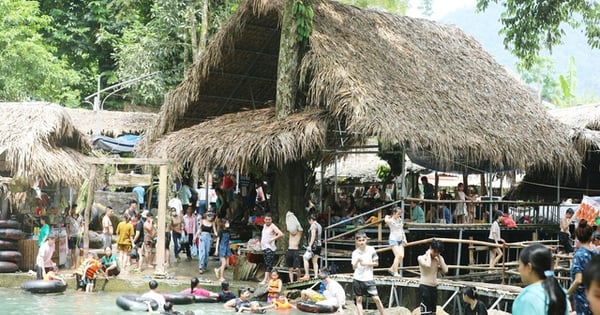












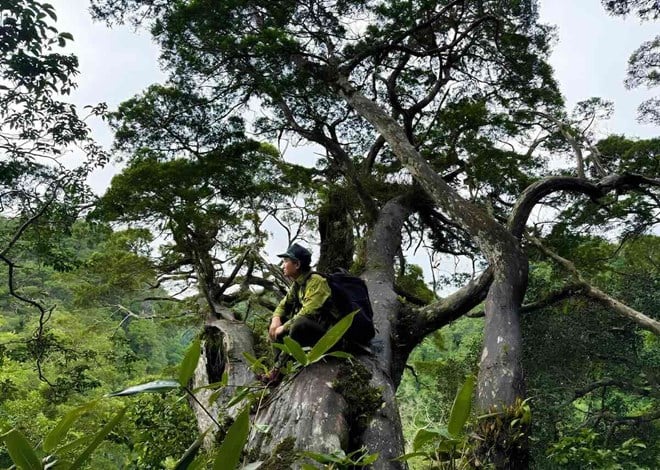

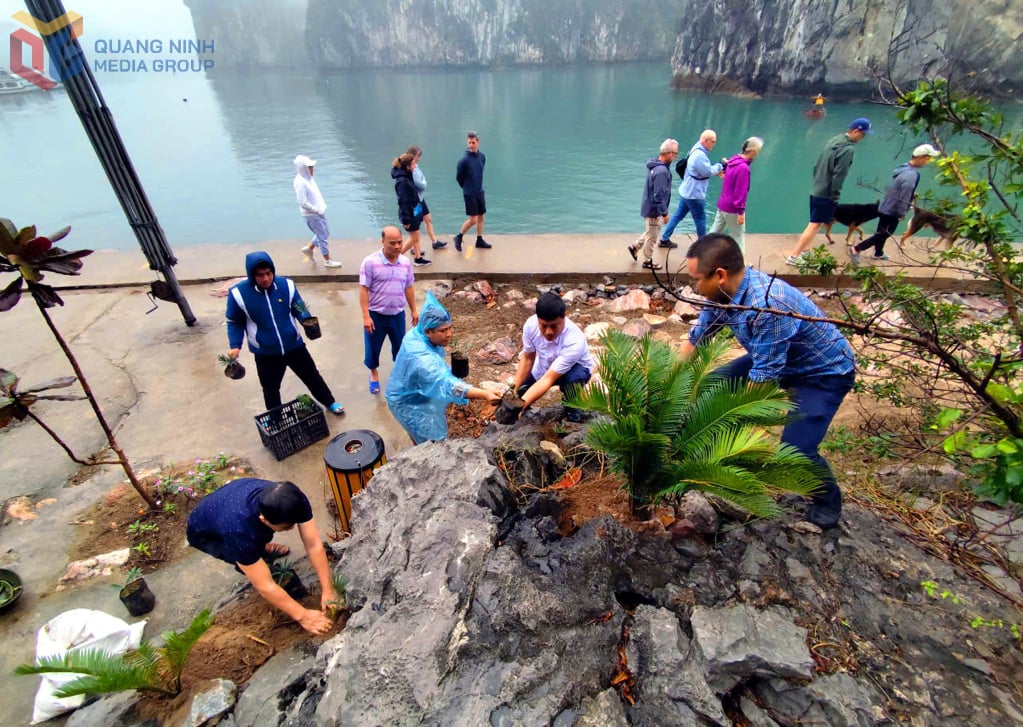






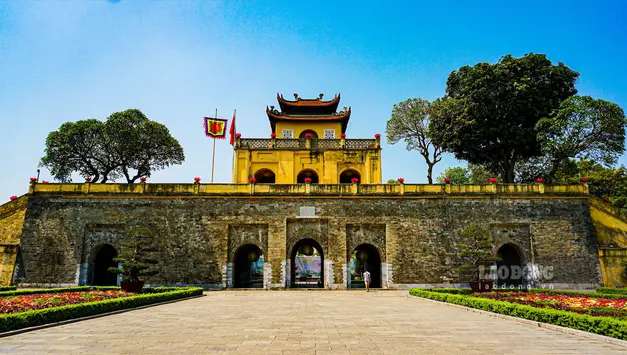











































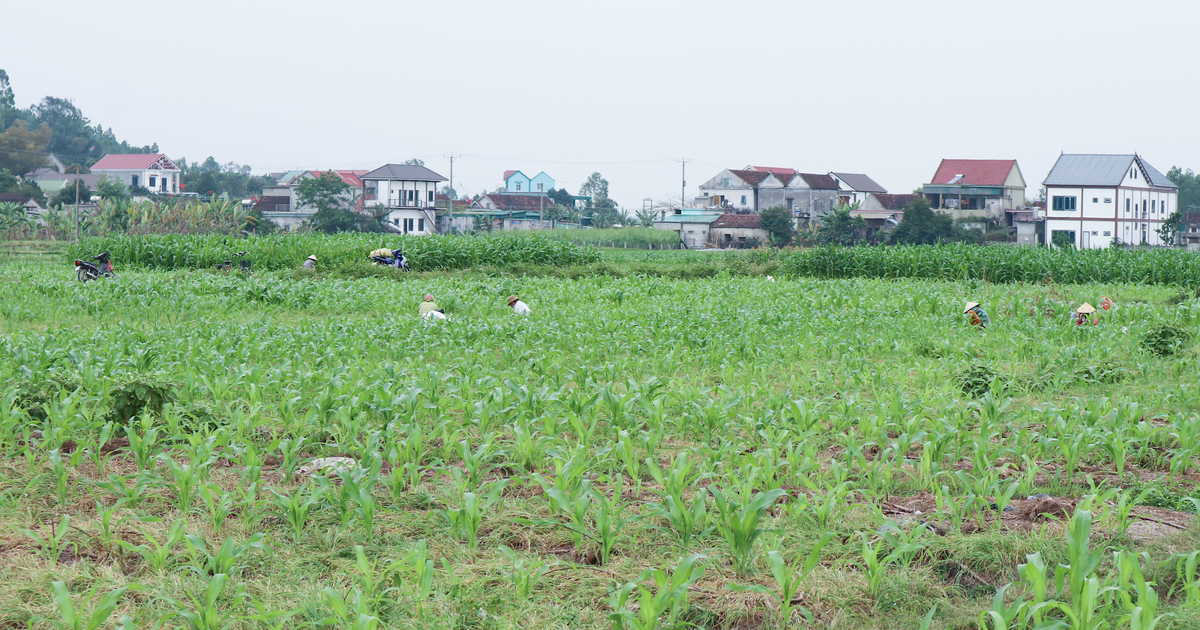

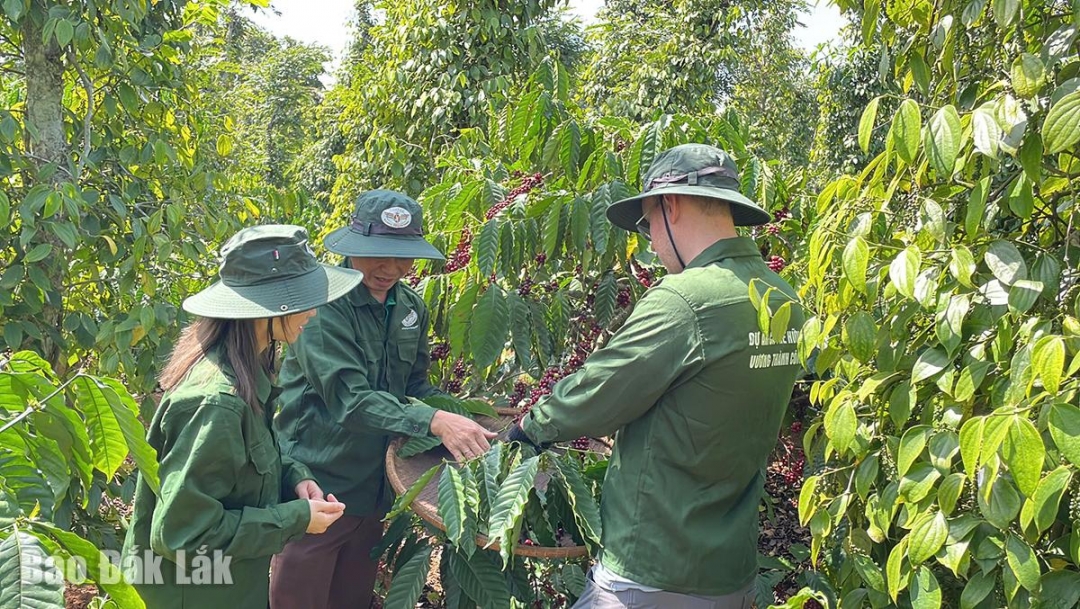




![[REVIEW OCOP] An Lanh Huong Vet Yen Cat](https://vstatic.vietnam.vn/vietnam/resource/IMAGE/2025/3/27/c25032328e9a47be9991d5be7c0cad8c)

Comment (0)